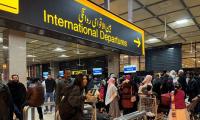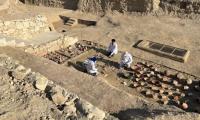Thirty-two years ago, on November 20, the UN General Assembly adopted the Convention on the Rights of the Child (UNCRC). This historic convention granted civil, political, economic, social and cultural rights to children and quickly became the most widely ratified human rights treaty in history.
Each year, World Children’s Day is observed on November 20 to highlight the critical issues faced by children across the globe and to initiate a constructive dialogue in order to resolve these burning issues. Pakistan ratified the UNCRC on November 12, 1990 – 31 years ago.
This Children’s Day, Pakistan has some groundbreaking advancements to celebrate. Recently, the Federal Shariat Court (FSC), while hearing a petition filed by Sakeena Bibi, held that the tradition of swara/vani was against the fundamental teachings of Islam. Swara, a form of forced child marriage, is rampant in our society, but the cases related to it go widely unreported. It is a tradition through which girls and women are given in marriage or servitude to an aggrieved family as compensation to end disputes, by a council of tribal elders – commonly called jirga/panchayat.
In a separate judgment (the full judgment has not been made public yet), the FSC held that setting any minimum age limit for girls’ marriage by the state was not against the principles of Islam. The Child Marriage Restraint Act 1929 (CMRA), which is still applicable in some provinces in Pakistan, prohibits the marriage of a boy under the age of 18 and the marriage of a girl under the age of 16.
Sindh became the first province to comply with the UNCRC by repealing the CMRA. It enacted the Sindh Child Marriage Restraint Act (SCMRA) in 2014. The SCMRA fixed the legal minimum age of marriage for both girls and boys at 18. It has also set separate punishments for a male contracting party, the person who solemnises a child marriage, and the parents or guardians concerned. Despite these laws, the prevalence of child marriage continues to be high in Sindh.
The Multiple Indicator Cluster Survey, which was conducted in all 29 districts of Sindh by the Board of Statistics (BOS) Sindh during 2018-2019, revealed that almost one in four of women aged between 20 and 24 were married before the age of 18. This is because the implementation of progressive human rights legislation requires years of advocacy. They require interventions at the grassroots level – the very causes of child marriage. The enactment of the SCMRA was a progressive step by the Sindh government, which was taken at the right time.
The dilemma of child marriage is interconnected and affiliated with a number of social issues faced by children which not only makes them more vulnerable but also pushes them into a vicious cycle of intergenerational poverty. It results in serious violations of the rights of both the child bride and the child groom. But what’s important to mention here is that girls are disproportionately affected and end up bearing the brunt. Child marriages violate children’s right to health, education, and a consensual marriage, and deprive them of freedom of movement, economic independence, and freedom from abuse and violence. It has long-lasting effects as women struggle with the health effects of early pregnancies, domestic violence and marital rape throughout their lives.
Child marriage is deeply rooted in tradition, culture and customary practices. Although the verdicts given by the FSC are commendable, they have come a little too late. Changing a practice that arises from years of cultural practices and traditions takes years of advocacy and interventions, especially in rural areas where most incidents of child marriages arise. This is evident from the fact that despite the Supreme Court’s judgment in ‘National Commission on the Status of Women vs Government of Pakistan’ through Secretary Law and Justice (PLD 2019 SC 218) where it held that jirgas are unconstitutional when they act as parallel courts in criminal or civil matters, these councils continue to operate in rural communities and give rise to gender-based violence and rights violations. People who live in rural and tribal areas remain unaware of their legal rights and the process of enforcing them. They lack access to the Criminal Justice System (CJS).
In 2016, the Human Rights Watch revealed that the police in Pakistan are widely feared and the least trusted government institution and that they are mostly under the control of “…powerful politicians, wealthy landowners, and other influential members of society…the poor and other vulnerable or marginalised groups invariably face the greatest obstacles to obtaining justice in a system that is rigged against them.’’ Also, fear of being classified as a social outcast can make it difficult for victims/survivors to seek help. How, in light of this, will the practice of swara/vani come to an end? It is important to note here that the state takes no steps to officially record the cases or provide any data on the same.
A majority of children in Pakistan are facing serious child rights violations. Pakistan is one of the only two countries where the polio virus remains endemic. The practice of employment of children in hazardous work conditions remains unaddressed. According to the Child Rights Movement, more than 12.5 million children in Pakistan are involved in child labour. Pakistan, in addition to the UNCRC, has ratified the International Labour Organisation’s (ILO’s) core conventions related to child labour including the Minimum Age Convention, 1973 (No 138) and the Worst Forms of Child Labour Convention, 1999 (No 182), but they largely remain unimplemented.
Today, children face new unconventional challenges that are further exacerbated by Covid-19 and the climate crisis. Pakistan is finding it difficult to deal with these challenges. Lahore has been consistently categorised as the world’s most polluted city. Also, the Covid-19 crisis exposed the existing fault lines and deep cracks in children’s rights. Pakistan already had the world’s second-highest number of out-of-school children with, according to a Unicef report, 44 per cent of the total population in the 5-16 age bracket not attending school; this was exacerbated by the pandemic.
The imperative question is: will Pakistan tackle new challenges like the one posed by the rise of digital technology, which exposes children to digital risks such as cyberbullying and sexual abuse? The government has not even initiated any talks on this issue at the right forums.
As per the latest Unicef report, 45 percent of Pakistan’s population is under the age of 18. Failing to protect our children means that we have failed to protect our future. The government must ensure the strict implementation of the UNCRC and should put an end to the plight faced by children.
The writer is a barrister.
Email: ridaatahir@gmail.com
A common thing that happens in Pakistan is tendency for young children to go to bed very late, even on school night
Pakistan climate strategy risks being undermined by incoherent policy framework that fails to integrate climate action
Starmer comes up with strong reaction on Monday, condemning Musk’s increasingly erratic attacks on UK govt
Prolonged slowdown erodes credibility of Pakistan’s IT sector on the global stage
Role of UN in peacekeeping must also be strengthened to ensure stability in region
America’s economic and technological prowess is rooted in its willingness to embrace risk, foster innovation, and...







